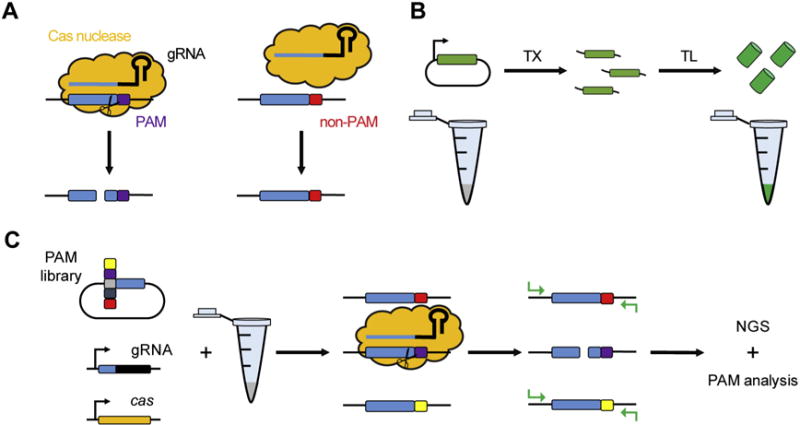Fig. 1.

An overview of TXTL and its application for PAM determination. (A) Targeting by Cas nucleases. Targeting relies on a ribonucleoprotein complex composed of the Cas nuclease(s) and a guide RNA (gRNA) targeting DNA flanked by a PAM. Sequences lacking a PAM are ignored by the complex, even if the protospacer is perfectly complementary to the spacer portion of the gRNA. (B) Image showing the basic concept of TXTL. DNA encoding genes or non-coding RNA can be expressed in a single TXTL reaction. (C) The flow of a PAM characterization assay using TXTL. A plasmid library containing the randomized PAM sequence as well as DNA encoding a Cas nuclease and its gRNA can be added to a TXTL mix. After expression of the Cas nuclease and its gRNA, a ribonucleoprotein complex will be formed. Then the PAM libraries containing PAMs will be cleaved, while those containing a non-PAM PCR amplified with appropriate adapters and indices for analysis through a NGS platform. The PAM of the Cas nuclease will then be deciphered through a depletion analysis.
